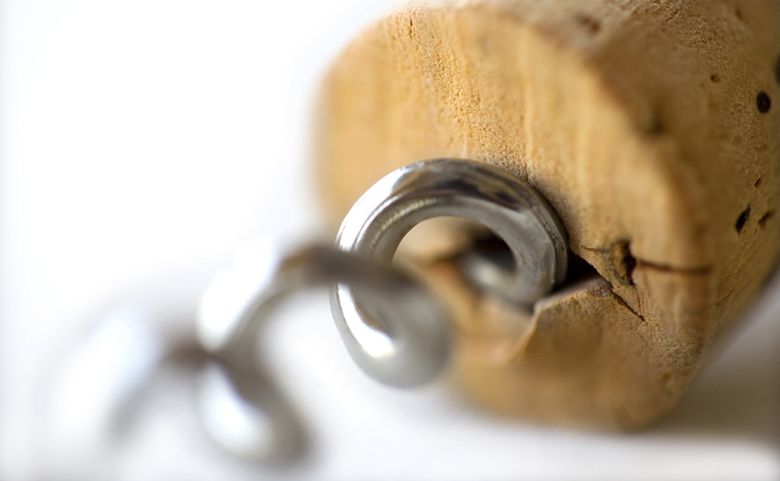Repping Trade
Oregon Wine Council begins association
A new trade organization has taken root in the state of Oregon. The Oregon Wine Council (OWC), launched in October, looks to sing the praises of our lauded wine scene and better represent segments of the enological and viticultural communities.
Up until now, the main trade organization in the Beaver State has been the Oregon Winegrowers Association (OWA). The Portland-based assembly is “a vital advocate for the health, growth and economic stability of Oregon’s wine grape growing and wine production community,” according to its website. Its first incarnation was established in 1969 and has since sought to not only support the industry but lobby on its behalf in both Salem and Washington, D.C.
Given the meteoric growth of Oregon wine, it’s not entirely surprising that a new player is entering the pro-trade game. The Willamette Valley alone has an entire cast of associations looking after its various appellations, from the Chehalem Mountains Winegrowers Association to the Eola-Amity Hills Winegrowers Association. These organizations tend to focus more on localized issues such as appellation identity and awareness, but still, they echo an evolving wine economy and map, nonetheless.
The OWC is the result of changing dynamics amid a vital and still-growing realm of Oregon agriculture. Southern Oregon growers and producers, in particular, have long operated in the shadow of the more recognized and more publicized Willamette Valley. They want their work to enjoy a similar spotlight to their northern grape brethren.
But there’s more to it, as the OWC’s cast of members indicates. Sam Tannahill is a board member and co-founder of A to Z Wineworks, one of Oregon’s largest producers. “The landscape looked very different back when the Oregon Wine Board was created,” he says. “There were no 600-acre vineyards and 400,000-case Oregon wineries.”
He says OWC came about after realizing the industry had matured, but the institutions hadn’t necessarily followed suit. “The goal with the Council is to take a time-out and really define what industry change looks like,” Tannahill explains. Members will further define their goals toward the end of November, when the organization goes on a retreat — a website is in the works. Currently, it’s an eclectic mix of producers and growers of varying sizes and spanning the state, from Union Wine Company and Wine by Joe, to Del Rio and Blue Heron Vineyards.
He says many producers, big and small, have no voice in how their taxes are put to work. A major catalyst for the OWC, however, can be traced to a certain polarizing piece of legislation and the sour-grape deal heard around the region that preceded it.
The bill, SB111, aims to further preserve the Oregon wine brand. As it stands, the state has some of the strictest labeling regulations in the country. This bill, had it passed, would emphasize them. Essentially, SB111 pitted the OWA, who sponsored it, against the rest. The opposition coalesced and took on the Oregon Wine Council moniker.
For reference, the current protocol in Oregon is that for a wine to reference an in-state American Viticultural Area (AVA), 95% of the fruit must come from said area. The federal standards are a bit looser, asking that 85% of the fruit be finished in the state of origin.
SB111 asked the Oregon Liquor Control Commission (OLCC) to set up enforcement on the established rules. It also pushed for a $25-per-ton tax on grapes. Tannahill argues that the process to get to the bill language wasn’t as transparent as it could have been. Regardless, the heightened sensitivity to labeling restrictions received a massive boost in the fall of last year, when an out-of-state buyer made headlines by backing out of fruit contracts at the last minute.
The incident was just before harvest 2018, in Southern Oregon. California’s Copper Cane — the folks behind Elouan and The Willametter Journal — deemed the many rows of fruit it was slated to purchase too smoky left the fruit on the vine. Growers deservedly panicked, unsure how to turn a profit on their crop in the 11th hour. A prevalent wildfire season had thrown some haze into the skies, but the consensus across the board seemed to be that the fruit in question was, in fact, just fine.
Most of us know what happened next. The Solidarity label was born, salvaging the fruit and turning it into perfectly drinkable wines. More importantly, a movement was born, one that looked more closely at what it meant to throw phrases like “Oregon,” “Willamette Valley,” “Rogue Valley” and more on labels.
The labeling conversation took off and took on some nuance. A misleading California label was an obvious target. But what about the growers simply looking to sell their fruit? Or the producers who blend and want to take advantage, at least in part, of the marketing cache tied to individual appellations? Or the Oregon industry folks operating outside the Willamette Valley, away from the brightest beam of limelight?
Roughly one-fifth of all of Oregon’s vineyard yield is shipped beyond state lines. While appellation-designate wines are popular, many producers prefer to blend, from spot to spot, or are pushed to do so by the scale of their operations. There’s no one solution, for certain, but the conversation that’s unfolding is an important one.
Claims of under-representation may have spawned the now two-pronged Oregon trade association animal, but both sides insist they’re looking after the greater good. And that good is the vitality and forward-moving motion of the entire Oregon wine industry.
“The most important thing is to stay unified,” Tannahill adds. He warns against potentially being rolled by bigger wine forces that exist beyond Oregon’s boundaries. The industry is thriving but it’s still just a drop in the American wine bucket.
“The foundation of the industry is the growers,” he says.











